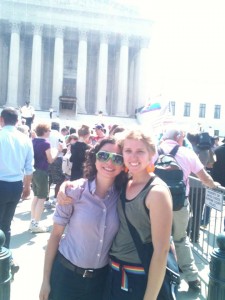Contributed by Stephanie Krehbiel
In 2009, I started a doctoral program in American Studies at the University of Kansas, with a plan to study what, on a good day, I call “the conflicts around sexual diversity in the Mennonite church,” and what, on a bad day, I call, “Mennonites and their f*#ked-up sex problems.” I have also resorted to the fast and efficient descriptor “LGBTQ issues in the Mennonite church,” because the phrase “sexual diversity,” outside of LGBTQ and academic circles, often leads to a “come again?” But increasingly I feel allergic to the word “issues.” Mennonites use that word like a armored shield against people whose actual bodies they’re afraid of. The further I get into this, the more “f*#ked-up sex problems” seems like the way to go.
Is that too glib? Possibly. It’s hard to study anything related to gender and sexuality without hitting a mass of tangles, and realizing how throughly ensnared all sexuality-related…issues…are with each other, and with a whole bunch of other things. Start pulling at the string labeled “contraception,” for instance, and you’ll end up with a big fibrous knot of deep-set cultural anxiety over all non-reproductive sex. Pull harder and the tangles get deeper: whom do we actually believe should be reproducing? How much money do they have? What color are they? Pull at the historical construct that is the term “homosexual” and you’ll pull up that same wad of anxiety about non-reproductive sex, and then just when you think you can contain that wad in the sanctuary of a church, you hit the stuff on nationalism and masculinity, and it all goes bananas. Pull on the thread that is LGBTQ justice in the U.S., and you’ll get knotted right up with the foundational ambivalences in the separation of church and state, with changing scientific discourses, and with the complex, evolving meanings of that precious thing that we call civil rights. Read more ›

